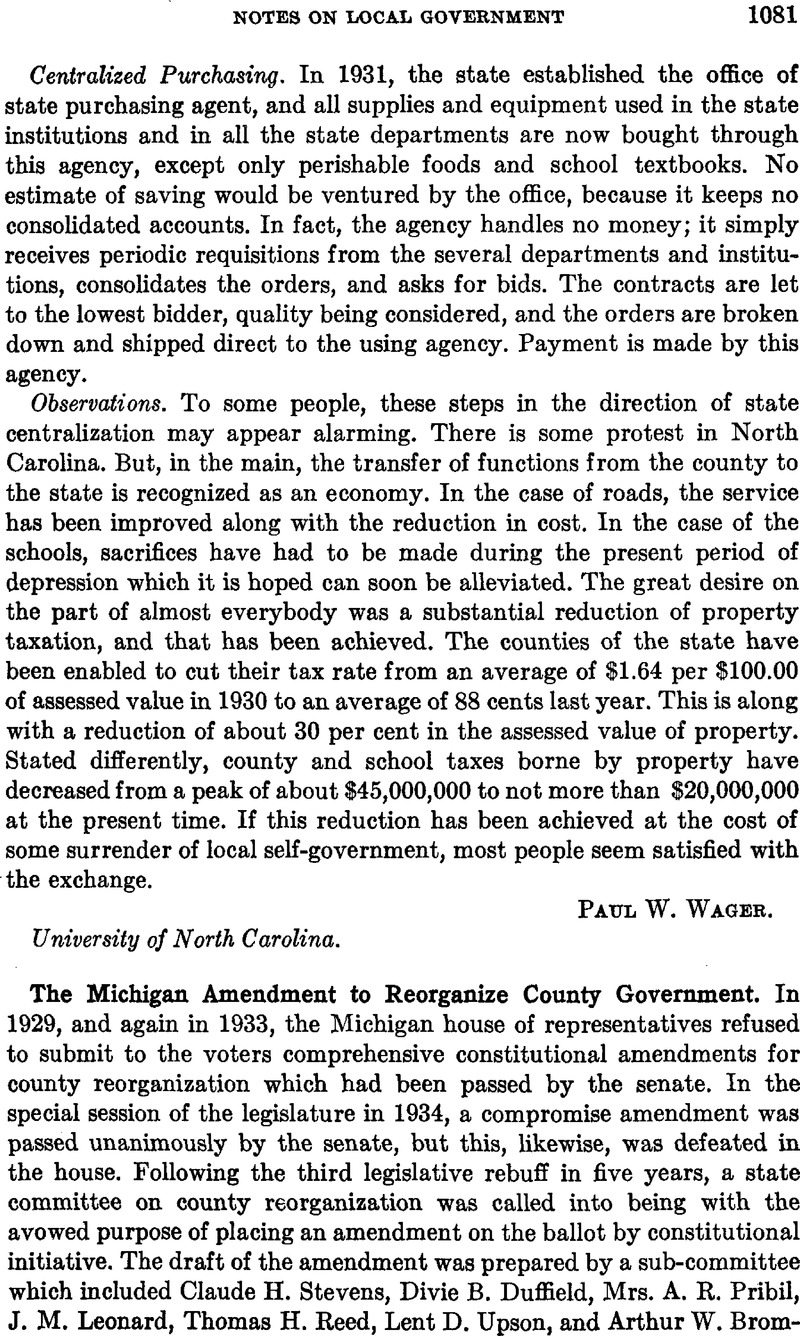No CrossRef data available.
Article contents
The Michigan Amendment to Reorganize County Government
Published online by Cambridge University Press: 02 September 2013
Abstract

- Type
- Notes on Local Government
- Information
- Copyright
- Copyright © American Political Science Association 1934
References
1 The county home rule amendment was defeated. Incomplete but representative returns were as follows: yes, 333,000; no, 422,000. The amendment appeared on the ballot with five other amendments. Four of these clearly deserved defeat. A fifth, calling for the non-partisan election of judges, was a matter of opinion. Toward the close of the campaign, fourteen state-wide organizations, in an effort to defeat four of the amendments, urged the voters to say “no” to all. Some of these groups had previously supported county home rule, but abandoned it in the closing weeks to prevent confusion. The voters responded by defeating every amendment on the ballot. In number of affirmative votes, county home rule ran second to the nonpartisan election of judges, but the other amendments were overwhelmed two, three, and four to one. Wayne (Detroit) and Oakland (Pontiac) counties gave county home rule a majority. The amendment ran well in Kent (Grand Rapids), Genesee (Flint), and Jackson (Jackson) counties. Majorities against the amendment piled up in the rural counties.



Comments
No Comments have been published for this article.